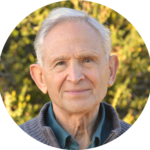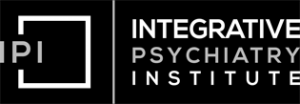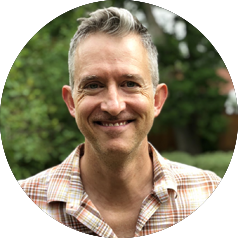Conceptualizing ADHD From One of the Earliest Pioneers – Dr. John Ratey – HPP 87
In today’s episode, we are delighted to have a conversation with one of psychiatry’s visionary pioneers and one of the first proponents of the ADHD syndrome. John Ratey, MD has expanded the conceptualization of ADHD and has deeply explored the role of exercise in mental health. Dr. Ratey has written several books about mental health, and he joins us to talk about his latest book, ADHD 2.0, which brings fresh perspectives on diagnosis and treatment of this condition.
Dr. Ratey’s 2008 book, SPARK: The Revolutionary New Science of Exercise and the Brain, brought exercise into the mental health conversation. Join us as we dive deep into conversation around ADHD, its symptoms, its root causes, and how we can address this disorder through a dynamic integrative treatment approach.
Show Notes:
Understanding ADHD – 03:11
“Inattention, impulsivity and hyperactivity. So those three ways of the brain taking over, or not taking over, are what we need to pay attention to with people with attention deficit disorder”
An Evolutionary Trait – 08:33
“So one of the things we make a big deal of in all of our books is about impulsivity. What is creativity but impulsivity gone right? It really is following the impulse to something that seems to be changing the way other people see the world”
Fractured Attention: Causal Factors From Modern Technology – 12:01
“Because we can click and go back to the beginning, that’s great. But that doesn’t teach sustaining the attention nearly as much as it should. And you repeat, repeat, repeat. So there’s learning on top of the genetic push, the genetic basis of things, and then you obviously change which genes are being activated over time”
The Significance Of The Cerebellum – 19:05
“So by focusing on the cerebellum, we know that this is a good area, and it has an important part to play in keeping our attention together. I see it helping the coordination of brain activity. I fell in love with the cerebellum in the 90s. And so we’ve stayed with it, because it does help coordinate our higher functions, our thoughts, our attention, our moods”
ADHD And The Brain Networks – 24:21
“And that’s really important because it’s something that we didn’t know before. And so that developed into connectomes, or networks, in the brain. And then we began to look at all the different networks: when we’re paying attention, when we’re not, when we’re responding to stimuli, when we’re not”
How Exercise Brings A Big Impact – 29:47
“It increases our concentration of dopamine and norepinephrine, and for the Prozac world, for serotonin. But it also does so much more to help us pay attention. It calms us down, and certainly it elevates our feeling of wellness and well-being by liberating all the different neural hormones to the endorphins and the endocannabinoids. And the big one coming lately is oxytocin”
Against ADHD: An Integrative Treatment Approach – 33:16
“I think the big thing, of course, is medication—But using it with exercise. The best kinds of exercise are those that involve balance and coordination. That really makes a big difference. So exercise like dance, which is an amazing exercise”
Full Episode Transcript
SPEAKERS
Keith Kurlander, Dr. Will Van Derveer, Dr. John Ratey
Dr. John Ratey 00:00
The more your focus, the less anxiety you’re going to have. And I get back to the evolutionary roots. If you were not attending when we were hunter gatherers, you had better be anxious.
Keith Kurlander 00:19
Thank you for joining us for The Higher Practice Podcast. I’m Keith Kurlander with Dr. Will Van Derveer. And this is the podcast where we explore what it takes to achieve optimal mental health. Hey there, welcome back to the show. This episode is a very near and dear to my heart. This episode is about ADHD, and the details of what is ADHD, some of the controversy behind ADHD, what are the root causes, it’s near and dear to my heart, because I’m definitely one of the people who got diagnosed with ADHD. On the more severe spectrum definitely struggled with many of the symptoms we think about early on in my life, particularly in attention, difficulty focusing, impulsivity, I was definitely a kid in school, growing up that was having small, incremental weeks or a couple months of actually being able to pay attention and mostly wondering why I couldn’t pay attention to the teacher talking, or the book I was reading, and why I wanted to kind of jump out of my chair at all times. So this goes back a long way. I’ve worked with a lot of people with this issue over time and get into some very interesting neuroscience in this in a really new way to think about it and the solutions that are real, and how it helped me help a lot of people I’ve seen and when you hear from this, basically authority on ADHD, this doctor and his research and his insights from basically 40 years since the early stages of even thinking about this as a disorder, this might really change your thinking and perspective on it. I’m so excited to dive into this and want to introduce Dr. John Ratey. He’s an associate Clinical Professor of Psychiatry at Harvard Medical School, and an internationally recognized expert in neuropsychiatry. He’s published over 60 peer reviewed articles and 11 books published in 17 languages, including the groundbreaking ADHD driven to distraction series with Dr. Ned Hallowell. With the publication of Spark, the revolutionary new science of exercise in the brain, Dr. Rowdy has established himself as one of the world’s foremost authorities on the brain fitness connection. His most recent book, go wild, explores how we can achieve optimal physical and mental health by getting in touch with our caveman roots, and how we can rewire our lives. Let’s introduce Dr. Rowdy to the show.
Dr. Will Van Derveer 03:05
Welcome Dr. John Ratey to the show.
Dr. John Ratey 03:07
Glad to be with you guys. This is exciting.
Dr. Will Van Derveer 03:11
It’s wonderful to be with a true pioneer and real creative thinker in medicine and psychiatry specifically, it’s been wonderful to get into your work recently, and you have a new book out called ADHD 2.0. And I just finished reading it, I got a lot out of this book and learned a lot. There were a lot of new things in there that I didn’t even know about. And I’ve been in practice for 20 years. So that’s always a refreshing experience with a new book. And it brought more questions. So here we are, it’s really nice to get to ask you. So first of all, having been in the field and working with people with ADHD for 35 or 40 years at this point?
Dr. John Ratey 03:48
It’s 40 years. Yeah.
Dr. Will Van Derveer 03:51
40 years. How do you currently define the syndrome?
Dr. John Ratey 03:55
Well, I would still stick with the tried and true three way look at an inattention, impulsivity and hyperactivity. So those three ways of the brain taking over or not taking over what we need to pay attention to with people with attention deficit disorder. So that to me is still the bedrock.
Dr. Will Van Derveer 04:21
Makes sense. Yeah, thank you. And there’s a what sounds like a more recent distinction that was new to me and reading your book called Variable Attention Stimulus Trade Vast. Can you tell us a little bit about what the differences are and what that means?
Dr. John Ratey 04:38
Well, the differences are that it takes away the deficit. It takes away the onus of bad, defective from the diagnosis verbal attention similar straight, talks about it as a trait we’re on a spectrum, especially in today’s world with all the zizoo razoo, The digital world that we’re immersed in, so everybody has an intention. And it’s a trade that we all have that when it gets to be so severe that it impacts our lives, then we start to think about something that should be treated, certainly can be recognized by us all. But when it interferes with our work or love, then we have to do something about it. And that’s what we typically think of is attention deficit disorder. But it’s really on the far beyond the edge of the spectrum, that we’ve tried to keep it from being so pejorative, that this is a bad thing, that you’re defective, because so much of the problems with people who have these traits is that they get to deal with shame and humiliation all the time. It’s a big part of their life. Because they screw up, they don’t do nearly what they could be doing in terms of performing in terms of being there for other people. And so they feel that they’re ashamed of themselves. And early on, they get that moniker on them, that they’re bad, that they’re defective, that they’re not enough. And this develops their self concept in a very compressed kind of way, and makes them feel very effective. And this is one thing, we really wanted to try and explode a bit and say, Look, we all have this. And it’s the people on the far end that really need to be talking about and helping, but we all need this, to need the information to help us pay attention better. In fact, that’s why we wrote the book 2.0 because we know so much more about the brain and how the brain works. And this is one of the things that is so poignant. And so drove us to do our fourth book in the series, basically the first being driven to distraction and answers and then delivering 2.0 really, like you say, there was new stuff in it. And I think we’ve learned a lot. Dr. Hallowell, I’ve been on the ball with ADD in all the new stuff coming out over the years. And so we put it together.
Keith Kurlander 07:35
Right? That’s Yeah, I mean, so it sounds like, I really like this vast terminology. I like the framework of a trait that obviously can become a disorder, if I understand you correctly, and I’m just curious, did you ever read Tom Hartman’s book way back evolutionary theory? Because he speaks about it as a trade also?
Dr. John Ratey 08:01
Yeah, Tom was one of the four people that started ADHD in a big way. Ross Barkley, Tom Harton, Ned Hallowell, and myself, really began to hold interest in attention deficit disorder. So Tom and I were very good friends. So I know a lot about Tom Harton. I haven’t kept in touch with him for the best 15 years or so. But nearby every now and then, we used to Hang Out together. So certainly was aware of the hunter farmer.
Keith Kurlander 08:31
Right. Well, I’m curious about your perspective, we start talking about this as a trait. Do you share any of his perspectives that this is an evolutionary trait that some people have more of, or you have a pretty different perspective here?
Dr. John Ratey 08:45
I would say that there’s nothing wrong with looking at it in those terms at all, that you could see it as something that evolved in. That the hunters really were people with ADHD, they were the ones pressing for the new, always moving from city to city. Curiosity was this, propelled them forward and had them being the ones to find the new. And I think that’s a very useful way to look at.
Keith Kurlander 09:13
So John, what would you say in terms of before we get into sort of the pathological version of this trade and the disorder? What would you say are the benefits of people that have this trait very strongly, and then when it’s very healthy, in modern society?
Dr. John Ratey 09:29
Well, I think, but this energy, ideas pop in to come up with the new, being absolutely 100% honest in their perception, even though they sometimes don’t want to be saying the emperor has no clothes early, and when the Emperor is walking by, there’s all of that. So one of the things we make a big deal of in all of our books is about impulsivity. What is creativity but impulsivity gone? Right? It really is following the impulse to something that seems to be changing the way other people see the world. So they’re sort of scanning for new ideas for the new, always pressing for something for something better, a better way to do things. And I think we’ve been fortunate in seeing so many entrepreneurs over the years, the computer, the Tesla, all these new and seemingly out of this world kinds of things wouldn’t have occurred, we didn’t have ADHD, and autism by the way, or the spectrum there, too. I grew up in ADD world, seeing a lot of patients from MIT and Harvard, faculty and students learn very early in that part of the incredible world that they were developing, we were gifted from them was in part due to their ADD, and they’re seeing the world really different than their ability to stay with it, you see, because attention deficit disorder really isn’t about a deficit, it’s actually it can be a surplus of attention. So people that have ADD that they stick with it, they get surplus potential they can’t pull away from it. And that’s okay, if they’re on the right track. And that’s what leads to all kinds of discoveries, all the stores know from.
Dr. Will Van Derveer 11:42
Right, to be able to stay focused in there and build a rocket or develop a lithium battery cell for a Tesla or something. Yeah.
Dr. John Ratey 11:53
Words or shapes, the visual world in a digital world that we have.
Dr. Will Van Derveer 12:01
I’m curious about the causes of these phenomena. And obviously, we live in a kind of hyper digital age. And you talk about that in your book about fractured attention from screens and children on screens and things. But in the vast sort of array of the landscape of causal factors, how do you think about that landscape? What’s in there?
Dr. John Ratey 12:21
I think, by far, the biggest is the genetic load that people have, because it is so transmitted in families. And that’s by far the most important, but then you add on all the factors of society come above of our culture of the digital world, for instance, right now, against the phones, the constant streaming, and we’re not training ourselves to be more attentive, and to have more ability to remain frustrated with something for a long enough period to bring into fruition. Because we can click and go back to the beginning, that’s great. But that doesn’t teach sustaining the attention as nearly as much as it should. And you repeat, repeat, repeat. So there’s learning on top of the genetic push the genetic basis of things, and then you obviously change which genes are being activated over time. So yeah, people that another factor is getting early insults, meaning some traumas that happen early in your life, that can lead to disturbing your genes and your whatever to make your brain less noisy. I have this whole concept of noise that I’m going to be talking about in Paris at one point soon, that relates to that people with ADHD have a noisy brain and they want to get focused, but they oftentimes can dial it in that leads to their frustration, and often their anger, their impulsive actions, stupid stuff that they do.
Keith Kurlander 14:10
You mentioned just now, you talked about earlier experiences, insults, traumas. How big of a factor do you think that is in ADHD in terms of attachment injuries, severe complex traumas? Do you think it’s a big factor?
Dr. John Ratey 14:26
I think it’s a factor. I think it doesn’t really compare to the genetic load that people get, but it’s a factor. But that’s not to say, I mean, you can have someone who has none of those insults, perfect job set up for them with love and challenge and parents are very wise. And still there come out with kids that are five plus ADD. That will certainly help us see this in kids who have advantages. And are pushed into the right activities and parents thinking about it and parents reading to them. And all this stuff that we know helps in general, it helps even more so in specific to people with vast, on the edge of the spectrum.
Keith Kurlander 15:18
So it’s a factor and it’s a multifactorial condition, and there’s a strong genetic influence on what I’m hearing and what are some of the other factors John is location exercise, like, what are some of the other big ones?
Dr. John Ratey 15:31
Oh, yeah, well, I mean, exercise is more later. But I’m thinking of early development. And there you have all the heavy metals, early infections of the ears, which is a big, finding that people who have many headaches early on, and are treated, they can have all kinds of brain disturbances. Whether it’s ADHD, or OCD, or panic disorder, they can be a factor in that, and certainly, early disappointment, early losses, tragic losses, certainly can impact your attention, if you’re not present all the time, creating an anxious, noisy, inner life. And this can push you towards having problems with your attention. I think a big thing that we stress and I particularly really focus on is the interaction between anxiety and attention. People say well, a lot of attention, problems, anxiety, yes, but they’re interactive. The more your focus, the less anxiety you’re going to have. It might get back to the evolutionary roots. If you were not attending, when we were hunter gatherers, you had better be anxious, because you were food for the cats or going to stumble when yourself, then it was something to avoid and be anxious about. So there’s this interaction. And we see this all the time with treatment, when the focus improves, the anxiety drops. And it’s a stunner to many people putting up on stimulants we’ll talk about later, but pretty deep on stimulants help with anxiety as well, that’s sort of counterintuitive. But it was.
Dr. Will Van Derveer 17:41
I’ve seen that over and over again, in my practice of prescribing a stimulant, and watching the anxiety melt away, it’s really quite remarkable. And it makes perfect sense with what you’re saying. Before we move on from causes. I wanted to ask your opinion about the correlation between early ear infections and ADHD. And I have my own theories about that with regard to the antibiotics that are used, and then the impact on the gut microbiome gut brain connection. I’m just wondering what your thoughts are about that, as far as Do you think that’s a kind of post inflammatory situation regarding the infection, or do you think it’s a microbiome issue from antibiotics or some other mechanism?
Dr. John Ratey 18:23
Put them all together. I think we can separate that out until we get smarter. Really, we’re getting close to getting smarter with the AI moving in. And right, it will get smarter and we will be able to track these things. And the wonderful work being done with the microbiome, oh, my goodness, that is just so important now is another brain that we’re learning about. So when you mess with it, you mess with it. It changes might have an impact on all kinds of brains. Attention, mood, anxiety, all that stuff.
Dr. Will Van Derveer 19:05
Exactly. Especially the early insults seem to have far ranging ramifications. Speaking of the little brain, she said, another brain as it triggered a memory for me of part of your book about the cerebellum, it’s quite remarkable to think about this small part of the brain in the back of the head that can have such a big impact on attention. And not just attention. But this concept of this symmetry of thought and having an impact on mood, having an impact on cognition. And I wonder if you could share with the audience a little bit about what that research has taught us about ADHD in particular?
Dr. John Ratey 19:43
Yeah, well, it really came to light looking autistic kids and autistic adults, seminal work done, looking at the entire brain and focusing on the cerebellum that there were aberrations. And we know that autistic individuals 50% will have problems with coordination and balance. And this then led to the opening actually of our interest in psychiatry into the cerebellum. In the early 90s, we began to say, hey, there’s more to this cerebellum than just having us pass the sobriety test on the side of the road by putting heel to toe, or finger to nose, but, and then Nancy Andres, and looked at it, the cerebellum involved in schizophrenia, and there was a whole series of papers coming out there. And then in the mid 90s, Marty Taisha MacLean began to say, hey, there’s something different about kids with ADHD, and their brains and their cerebellum. And in fact, looking at where Ritalin worked, many of these kids were in their cerebellum, it did help deal with some of the overactive issues when they were trying to contain their movements. And so by focusing on the cerebellum, we know that this is a good area, and has an important part to play. In keeping our attention together, I see it helping the coordination of brain activity. I fell in love with the cerebellum in the 90s. And so we’ve stayed with it, because it does help coordinate our higher functions, our thoughts, our attention, our moods, our reading became a big deal, dyslexia, looking at the cerebellum, then attention as well. So what does all this have to do with our books talks about understanding that, that this matriarch of thought and this matriarch of attention. But then the good news is that you can do something about it. You can train up the cerebellum, one of the facts about the cerebellum that I love is it contains about 70% of our nerve cells. Our total brain cells are in the cerebellum.
Dr. Will Van Derveer 22:19
And remarkable, yeah.
Dr. John Ratey 22:21
Constantly clicking away, constantly in motion, whether you’re asleep or just not moving, your cerebellum is active. And it’s very plastic, meaning like the rest of our brain, but this is a certain part of the brain is even more plastic, meaning that it can grow, it can change, it can grow connections. So by training this, you get more bang for your buck, in this note’s attention.
Dr. Will Van Derveer 22:53
from your experience John, how big of a lever is vestibular training or rocker boards or DCS training? For the clinician out there in the audience? Who’s wondering, is this sort of like 50%? of what a stimulant could do? Is it 5%? I’m just getting a sense of, if we’re putting together an integrative treatment plan for someone that would probably include, at least in the beginning medication. Just curious what other tools he would put in a toolkit there?
Dr. John Ratey 23:24
Oh, yeah, I think the biggest is to get people trained, balance and coordination is a must, was it 50 50 plus percent of ADHD kids will have discoordination problems, the other half that some of them will have super coordination. So that’s what you have to pay attention to, it’s not one size fits all. But the rocker boards and the Bosu balls, standing on one foot, popping, closing your eyes doing all the coordination exercises that most kids and adults should be doing really trains the cerebellum and makes vestibular cerebellar access stronger so that you do have better balance. And as a side effect, you have better attention. And without medicine. So what percent? I would say it’s a big percent of I don’t know, that’s funny.
Keith Kurlander 24:21
I mean, I think it’s good to just even hear like, yes it has a big impact. We need to be paying attention. I’m also curious because we’re in a sort of the brain structure conversation here. Love to hear your thoughts more about brain networks, and just what you’re thinking about what’s going on with ADHD in the brain network perspective. I know you have a lot of thoughts about that. And I think that’s really useful as a framework to just sort of help people understand what’s going on in their brain?
Dr. John Ratey 24:49
Right. It was a big part of the reason why we went through the book and did the fourth one, because this started in 2006, when neuroradiologists in St. Louis said, Look, every one we throw into this FMRI scanner. And we tell them to think of nothing and let their mind wander, has the same signature as the same picture on the FMRI on the front part in the back part of the brain, the medial frontal cortex, and the posterior cingulate are all alive, they light up, that means their activity is there, when you’re thinking of nothing. And that’s really important because it’s something that we didn’t know before. And then so that developed into connectomes, or networks in the brain. And then we began to look at all the different networks when we’re paying attention when we’re not when we’re responding to stimuli when we’re not. But there are two basic ones important to understand: the ADD button is this default mode. And contrast that with what’s called a test positive network, meaning if you’re paying attention to a stimuli to an auditory visual, or you’re trying to stay focus that this in the normal person and the neurotypical person, what happens is that the deeper node shuts down, goes down, isn’t really active in the Add person, it stays very much engaged. And in fact, battles, if you will, test positive. And this is really important for people who have attention problems to understand that this is a battle that they have, that when they’re trying to pay attention, there’s a draw, there’s a pool, there’s a magnet, pulling them away from their attention to get to this mind wandering place. Because in the default mode, that’s where we have all kinds of history and new ideas and things rolling around and new things to pay attention to. And by the way, also, where we have our memories of sharing affiliation, that are stored there. And so when you get full, you can get cooled down away from paying attention to getting wrapped into, oh my god, I’m such a failure, I’m not living up to what I know I can do. I’m going to hurt people. Then you go round and round and round. And you begin to ruminate. And this is why we call it the title of the chapter in the book is called the demon. And really looking at this rumination problem.
Keith Kurlander 27:45
So john, is this an issue between the interaction between the TPN and DMN, Or is it more about that the default mode network is just overactive in general?
Dr. John Ratey 27:55
No, when the neuroradiologists talked about it, it’s a glitchy switch, it doesn’t switch like it should, internally, but also between the DMN and the TPN, which is positive and default mode.
Keith Kurlander 28:13
Okay, I think the Mac switch.
Dr. John Ratey 28:15
Yeah, it’s not like an easy switch, in the neurotypical person, it is a nice smooth switch and it shuts off in the default mode when you’re paying attention or something.
Dr. Will Van Derveer 28:27
In the book, you use the metaphor of the gears being stripped between these two networks. So they kind of lost their neuro typical relationship with each other?
Dr. John Ratey 28:37
Yes, yes, exactly it. They don’t shut up. The DMN is like a chatterbox. It’s always there. Full of ideas there on good stuff, but also full of that shame and humiliation, memory. Right, We’ll go and go and go. And so an AD people know that, they relate to this as something that’s there all the time. Oh my god, am I going to do that? should I go for a walk, everything is all at once. And so in most cases, what you’re paying attention that shuts up. And what’s interesting that three things really helped that switch work, better. Exercise, meditation, and medication. They really helped that switch work better. And when you have overwhelming stimuli as well, that puts you in the TPN more when you’re focused, hyper focused on things. But the switch works better with those three M’s movement, meditation and medication.
Dr. Will Van Derveer 29:47
It’s so interesting. When we’re talking about movement, meditation and medication reminds me of my work which has been more focused on PTSD and mood disorders. And one of the big things that we see is within the default mode network, other hubs or nodes of communication, getting recruited into the default mode network around what you’re talking about, have obsessive rumination and shame based memory. And how distracting really that can be for someone who’s just trying to do anything, which is I think, also what you’re talking about and how, for example, one of the things that we do in our clinic is ketamine, which is interesting for the depressed person that it disrupts the over coupling inside the default mode network with some of these sub structures, subcortical structures and limbic system that really drive the shame and the negative belief systems. But it also has this boost on BDNF, which is another thing that you brought up in terms of exercise. And sort of, I’m wondering if you feel when you’re in the three M’s, when you think about movement, are you also? It sounds like you’re talking about other things beyond just the BDNF benefit of exercise?
Dr. John Ratey 31:05
Yeah, absolutely. I mean, for the past 12 years. Actually, more than that, in the exercise world and sort of started with driven distraction. In every book, we’ve talked about the benefits of exercise for ADHD. And we’ve talked mainly about doing the same thing as our stimulants do, because about an exercise is like taking a little bit of writing and a little bit of Prozak to put it in mood. In other words, it does the same thing. It increases our concentration of dopamine and norepinephrine, and for the Prozac world for serotonin. But it also does so much more, to help us pay attention. It calms us down, and certainly elevates our feeling of wellness and well being by liberating all the different neural hormones to the endorphins and the endocannabinoids. And the big one coming lately is oxytocin so that we’re much more interested in connecting to others. And we give a better vibes, and when we’re in a better state, or just having exercise or having a chronic diet and exercise. And that’s what we see with ADD people, in all my books Spark, I talk a lot about a whole chapter on detection resort, and how exercise works. And it helps grow new brain cells and helps make our brain cells that have much more plastic much more able to grow and develop new ideas and remember things but it also helps in helping our networks, which we see where the glitches which is boosted a bit is helped out with exercise.
Dr. Will Van Derveer 33:13
So many different benefits. Yeah, yeah.
Keith Kurlander 33:17
I’m curious, like, if you could give us a picture here in a few minutes of like, and it’s not a few minute question. But what a good integrative ADHD treatment plan might look like. If you’re working with someone for a year, what are you taking them through in the course of that year?
Dr. John Ratey 33:32
First of all is really establishing the diagnosis in their mind, letting them make and helping them see what this intention issue is, because that’s so important. People gloss over that too much. And parents need to be informed as well if you’re dealing with kids. But then I think the big thing, of course, is medication that maybe not initially, but certainly that’s in the offing. But using exercise, using it with exercise, the best kinds of exercise are those that involve balance and coordination that really makes a big difference. So exercise like janz, which is an amazing exercise for ADD is an important one because it really challenges the brain so much. And something like the ball sports and people playing because you have to not only be in a high state of aerobic activity, but you’re using other muscles and you’re using your brain and you’re using your cerebellum and you’re switching and changing the switching changing and evaluating that then his own practice for the attention says so, heavy diet of exercise is so important from jump rope to using the permanent rebounder which is favorite suggestion for kids, that’s a mini trampoline that people jump up and down on. Just doing that really helps them recover. If they’re in one of their catastrophic reactions, and sometimes they get into doing anything. One of the things that we talked about with the, getting caught in the default mode with the rumination side is to dues to know okay, I’m ruminating and I got to do something else. If you do something else, you break that cycle. That he talks about is don’t fry an egg, go dig a hole.
Keith Kurlander 35:41
Do something different? Yeah.
Dr. John Ratey 35:42
Yeah.
Keith Kurlander 35:43
This is kind of a follow up question to treatment, which is, what’s your position on neurofeedback fixing this issue between the task positive network and the default mode network, what’s your position on just using neurofeedback as a tool for ADHD?
Dr. John Ratey 35:57
Yeah, I know, there’s so many people now getting studies showing its effectiveness. The problem that we found, and I haven’t anyway, I haven’t seen results of people recently, but I hear tell there’s some good studies showing that neurofeedback helps. But what we found early on, sure there’s evolution in the field is that it worked fine while they were doing neurofeedback three times a week, but then stopping, left them back almost where they were before. And that may be different now. I can’t comment on that. But I know the people in Canada have done a lot of work showing that this is in fact a great treatment in Bessel Vander Kolk in all of his minions really big on neurofeedback, but in making major changes at last.
Dr. Will Van Derveer 36:58
There’s one element of neurofeedback which is interesting to me, which well a lot of it is, but the idea of using a diagnostic brain map to look at the connectome, and also where there’s slowing or brain waves that are too fast. And I’m wondering, with your experience over so many decades and do you feel, I guess my question is really coming from where do we get more scientific about the diagnosis?
Dr. John Ratey 37:25
Well, I think we’re going to be diagnosing and evaluating where people fit on the spectrum. Okay, I think that’s what it’s going to be. And I think the tools are coming. They’re really, I’m with an MIT guy yesterday, called drum brain company, brain SO, CO. And they have a little band that they put on your head. That they have 100 people working on the algorithms getting that information to the band, and has put a lot more than just ADHD. But that’s a big part of it so we’re getting there. We’re getting there ,now the video games that they’re, the FDA said use these to help develop the attention. I think we’re getting there. But this is what I wrote about in shadows in 1996. We are eventually going to be there, but now we’re getting there I think. And doing just that getting the brain map and getting Okay, we need to do this to correct that. Or to influence that correct, but influence that in a positive way. A lot of hope for the future, we have to get a COVID word will be fine.
Keith Kurlander 38:45
Right, that kind of leads into another question, which is just you can kind of look down the road 2030 years and psychiatry has evolved, but what would you hope to see about the way psychiatry is being practiced?
Dr. John Ratey 38:59
Well, I think even now, I think what we’re learning what I’ve learned is that if you get people into wellness in general, and this is where it intersects with you guys sort of integrated psychiatry. That’s the first step for every diagnosis, for ADHD, for schizophrenia, for depression, for anxiety, for addiction. This is a very big area that I think has been underrepresented. So it brings in the microturbine brings in sleep it brings in balance coordinates brings in exercise, it brings in connection which is a huge part of our book, talking about the power of connection and being connected, being connected with people in your environment, and your home, but also being connected with people outside of your arena. So the more connected you are, the healthier your brain is, the healthier your body An amazing study came out about four years ago, five years ago, looking at what prevented people from using Medicare B. So looking at 69 years, what prevented people from using Medicare B? Well, if you took your medicine your doctor prescribed, you have a positive score of 12. If you begin to exercise and stay with it, you have a positive score of 22. If you begin to be more social and stay with it, you have a positive score of 63. And the positive score means keeping you away from being sick. So in essence, on a million people, okay.
Keith Kurlander 40:43
Yeah, it’s beautiful, while like minds, you’re a good company here. What should people be aware of the books or whatever, what would you like people to be aware of about you?
Dr. John Ratey 40:57
Well, I have a couple of my websites johnratey.com, although I don’t date that very much at all. But it probably will in the future, then we have another website, sparkinglife.org, which is a nonprofit that we’re working with recovery centers, as well as now we’re starting to hold this. Anyway, the home project with first responders in Texas, but then ADHD, not just ADHD and prevent PTSD, to help them get healthier. But so that’s what’s Barton like, and then my Facebook page, John Ratey, MD, if you go there, we put up every day, a new article that’s in the popular press that is related to exercise and the brain to looks at mood, looks at attention, looks at addiction problems, looks at anxiety looks at promoting cognitive capacity, smarter kids, smarter adults, avoiding Alzheimer’s disease, all those things that exercise can do. So that’s a biggie and I think.
Keith Kurlander 42:14
Then of course, the book ADHD 2.0. Yes, great. So yeah, and we’ll put all this in the show notes, to make sure that everybody can find all this. And we ask one final question to everyone the same question. So it’s open to playing with us here for a moment. If you had a billboard that has a paragraph on it that every human being sees once in their life, what would you like? What message do you want them to know?
Dr. John Ratey 42:42
Well, I think, okay, I would say one sentence would cultivate connections. This is the real power of living and humanness. Cultivate, we have to work at it, and stay with it. Especially today, we’re so challenged with COVID. So I would just put the sentence I’m into.
Keith Kurlander 43:09
Well, thanks, john. That’s powerful. I love it. Thanks so much for your work and being on the show.
Dr. John Ratey 43:16
Thanks for having me, I enjoyed it.
Keith Kurlander 43:23
So again, that was really a powerful interview for me, because it contextualized a lot of my own understanding and thinking of what I was working with throughout my life. I think this network, looking at ADHD, has partly a problem between us switching between networks. And what happens in the default mode network. I think a lot of people with ADHD, it’s like when you hear this type of framework, it’s like, oh, this person understands me, right. And I think this is super helpful. Whether you have ADHD and you’re listening to the show, or you’ve worked with people with ADHD, just knowing that there are many reasons that you develop this type of inattention, distractible issue, and knowing that there’s a switch in the brain that we can repair. And actually, really get back into the focus that I think most people know intuitively, is inside each of us. I also want to invite you, if you know somebody with ADHD, send them the episode to share with them because this type of information, let’s get this all out into the hands of other people. Or leave us a review of the podcast. That’s also great because reviews really allow people who are skimming through podcasts to find ones that are going to be relevant to them and help them. We look forward to connecting with you again on the next episode of the higher practice podcast where we explore what it takes to achieve optimal mental health.

















